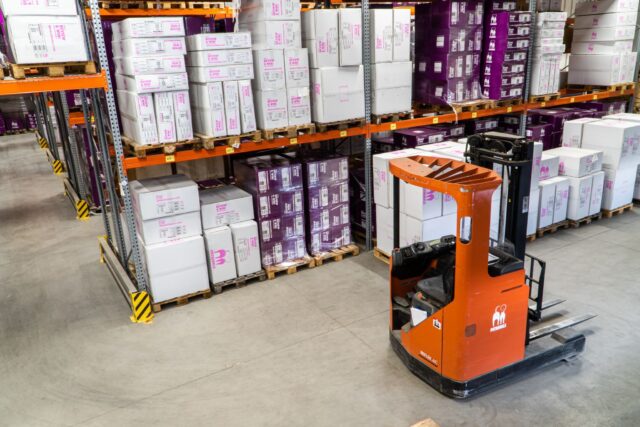
How Vendor Managed Inventory (VMI) Strengthens Supply Chain Resilience and Collaboration
To optimize inventory management, retailers and suppliers are increasingly turning to Vendor Managed Inventory (VMI) tools that transfer the responsibility…
Generix Ushers in a New Era of Intelligent Commerce for Retailers with AI-Driven Innovation Read the press release

Omnichannel fulfillment involves managing inventory and orders across multiple sales channels in a unified manner. Unlike traditional multi-channel strategies, where each channel operates in silos, omnichannel fulfillment ensures that inventory data is synchronized across all channels. This means a customer can order online and pick up in-store (BOPIS), or return an item purchased online at a physical location, without any discrepancies in inventory or order status.
This integrated approach not only improves the customer experience but also enhances operational efficiency by reducing the need for duplicate inventory and minimizing order processing times. Businesses that adopt omnichannel fulfillment can respond more flexibly to customer demands, optimize their inventory levels, and reduce costs associated with overstocking or stockouts.

The first step in adopting omnichannel fulfillment is to unify your inventory management system across all channels. This means integrating inventory data from physical stores, warehouses, and online platforms into a single system. By doing so, you gain real-time visibility into stock levels, which is crucial for preventing overselling and ensuring that customers have access to accurate product information across all channels.
Advanced inventory management software can automate this process, allowing you to track inventory movements, predict demand, and adjust stock levels proactively. This unified approach helps businesses manage fluctuating stock counts and ensures that they can meet customer expectations without compromising on inventory accuracy.
To achieve seamless omnichannel fulfillment, businesses must invest in advanced technologies that support efficient order processing and delivery. For instance, adopting warehouse automation systems, such as micro-fulfillment centers, can significantly reduce the time and labor required for picking, packing, and shipping orders.
Moreover, using AI-driven analytics tools can optimize inventory placement by analyzing factors like customer demand patterns, peak shopping times, and seasonal trends. These insights enable businesses to position inventory closer to the customer, reducing delivery times and improving overall fulfillment efficiency.
A centralized Order Management System (OMS) is critical for managing orders from multiple channels. An OMS consolidates orders from e-commerce platforms, physical stores, and third-party marketplaces into a single dashboard, enabling businesses to process and fulfill orders efficiently, regardless of the source.
The OMS should also integrate with your existing inventory and warehouse management systems to ensure that order fulfillment is synchronized with inventory availability. This integration is key to preventing order delays, reducing fulfillment errors, and providing customers with accurate delivery estimates.
Clear and consistent communication is vital in omnichannel fulfillment. Customers expect to be informed at every stage of their order journey—from confirmation to delivery. Businesses should leverage omnichannel communication strategies that keep customers updated through their preferred channels, whether via email, SMS, or mobile app notifications.
Additionally, providing customers with flexible fulfillment options, such as curbside pickup, same-day delivery, and ship-from-store, enhances the shopping experience and increases customer satisfaction. Ensuring that these options are clearly communicated and easy to use is essential for the success of your omnichannel strategy.
A seamless omnichannel fulfillment strategy requires a well-trained workforce that understands the nuances of operating in an omnichannel environment. Employees across all departments—from customer service to warehouse staff—must be trained on how to use the integrated systems and technologies that support omnichannel fulfillment.
This training should also emphasize the importance of real-time inventory management and customer communication. By ensuring that all team members are on the same page, businesses can reduce the risk of errors and improve the overall efficiency of their omnichannel operations.
Once your omnichannel fulfillment strategy is in place, continuous monitoring and optimization are crucial. Use data analytics to track key performance indicators (KPIs) such as order accuracy, delivery times, and customer satisfaction rates. Regularly reviewing this data allows you to identify areas for improvement and adjust your strategy as needed.
Additionally, staying informed about the latest trends and advancements in omnichannel technology can help you maintain a competitive edge. For example, the growing adoption of AI and machine learning in supply chain management offers new opportunities to optimize inventory levels and improve demand forecasting.

The benefits of adopting omnichannel fulfillment extend beyond meeting customer expectations. By integrating your sales and fulfillment processes, you can:

To optimize inventory management, retailers and suppliers are increasingly turning to Vendor Managed Inventory (VMI) tools that transfer the responsibility…

In an ever-evolving logistics environment, agile and precise warehouse resource management is essential to remain competitive. With increasing volumes driven…

France’s electronic invoicing reform relies on a Y-architecture, where Partner Dematerialization Providers (PDPs) play a central role in issuing and…

Work with our team to build your ideal supply chain software stack and tailor it to your unique business needs.